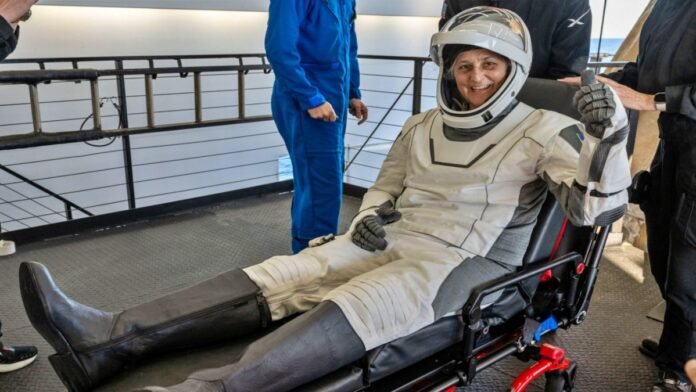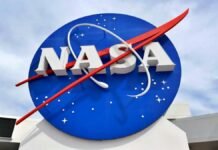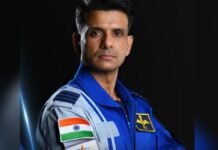
Key Points:
- NASA astronauts Sunita Williams, Butch Wilmore, Nick Hague, and Russian cosmonaut Aleksandr Gorbunov safely returned to Earth aboard SpaceX’s Crew Dragon capsule.
- The crew splashed down near Florida’s coast after a 17-hour journey from the International Space Station (ISS).
- A tense 10-minute communication blackout occurred during atmospheric re-entry.
- Astronauts face physical challenges like muscle weakness and balance issues after extended microgravity exposure.
- NASA praised the astronauts’ courage and dedication; celebrations erupted in Sunita Williams’ ancestral village in Gujarat.
New Delhi: NASA astronaut of Indian-origin Sunita Williams and her crewmates Butch Wilmore, Nick Hague, and Russian cosmonaut Aleksandr Gorbunov successfully returned to Earth early Wednesday morning after an extraordinary nine-month stay aboard the International Space Station (ISS). Their SpaceX Crew Dragon capsule splashed down safely off the coast of Florida at approximately 3:30 AM IST, concluding a mission that captured global attention.
Initially planned as an eight-day test flight aboard Boeing’s Starliner spacecraft, the mission dramatically extended to 286 days due to technical malfunctions with Starliner. Eventually, NASA arranged their return via SpaceX’s reliable Crew Dragon vehicle.
Dramatic Splashdown and Tense Re-entry
The astronauts began their journey home on Tuesday, departing the ISS for a 17-hour voyage back to Earth. During re-entry into Earth’s atmosphere one of the most dangerous phases of any space mission the capsule faced temperatures soaring up to 3,500°F (1,926°C), hot enough to melt iron. Protected by advanced heat-resistant materials, the spacecraft endured this extreme heat successfully.
However, a tense moment occurred during re-entry: a nerve-wracking 10-minute “communication blackout.” During this phase, radio signals between Mission Control and the capsule were completely disrupted due to ionized gases surrounding the spacecraft. Such blackouts are common but remain among the most critical and sensitive moments of space travel.
After emerging safely from this blackout period, parachutes deployed smoothly, slowing the capsule from over 27,000 km/h down to less than 32 km/h before gently landing in calm waters off Florida’s coast.
Immediate Recovery and Warm Welcome
Recovery teams swiftly approached the scorched capsule bobbing in gentle ocean waves. In an unexpected yet heartwarming scene, a pod of playful dolphins swam alongside as crews secured the spacecraft. The astronauts exited one by one onto mobility aids provided by medical teams standing by to assist them after their prolonged exposure to microgravity.
NASA officials praised their bravery and dedication throughout this unprecedented mission. Astronaut Nick Hague radioed SpaceX Flight Control in Hawthorne, California: “It was an amazing journey. I’m looking at the capsule and it’s a very happy moment.”
Physical Challenges Awaiting Astronauts
Returning astronauts face significant physical adjustments after long-duration missions. Months spent in microgravity weaken muscles and bones, causing balance issues and fatigue upon returning to Earth’s gravity. Conditions such as muscle atrophy (muscle shrinkage) and “baby feet”—softening of foot skin due to lack of friction are common among astronauts post-flight.
To address these health concerns, Williams and her crewmates will undergo NASA’s comprehensive 45-day rehabilitation program at Johnson Space Center in Houston. This specialized recovery process includes medical monitoring, physical therapy, and gradual reconditioning exercises designed to restore strength and balance.
Celebrations in India & Global Applause
Sunita Williams’ safe return sparked joyous celebrations thousands of miles away in Jhulasan village in Gujarat her ancestral hometown. Villagers performed traditional prayers (“aarti”), lit firecrackers, danced joyfully, and expressed immense pride over her successful mission.
Meanwhile, NASA Acting Administrator Janet Petro highlighted the significance of this achievement: “We are thrilled to have Suni, Butch, Nick, and Aleksandr home after their months-long mission conducting vital science aboard the ISS.”
The White House also hailed this successful return as fulfilling President Trump’s earlier pledge to safely bring home astronauts stranded due to Boeing’s spacecraft malfunction.
This historic splashdown marks another milestone for NASA’s commercial crew program with SpaceX demonstrating resilience amid unforeseen challenges and underscores humanity’s continued pursuit of exploration beyond our planet.



















































